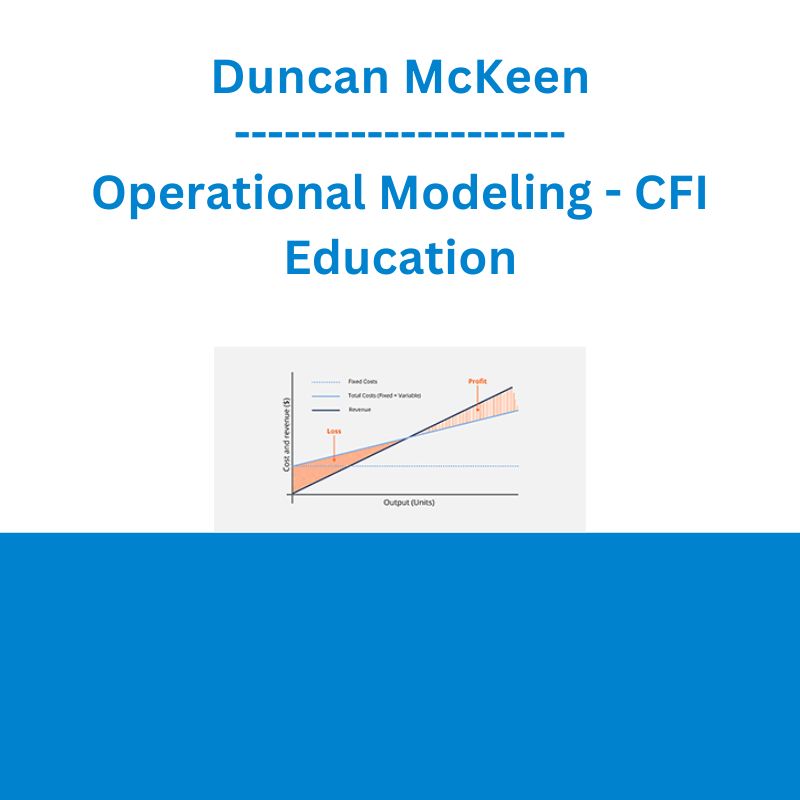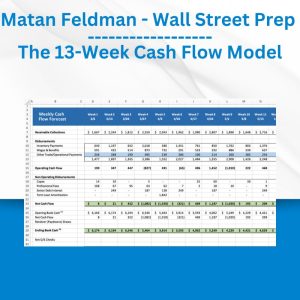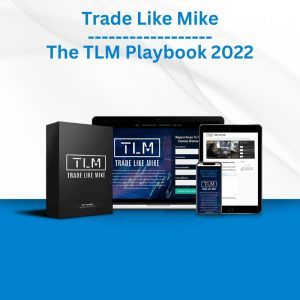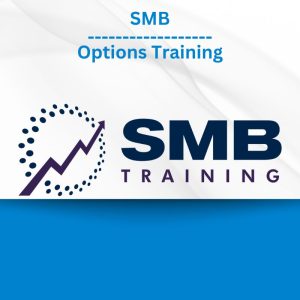*** Proof of Product ***
Exploring the Essential Features of “Duncan McKeen – Operational Modeling – CFI Education”
Operational Modeling
Learn Operational Financial Modeling in this course using a proven framework and become a more effective financial analyst.
Overview
Operational Modeling Course Overview
Financial models play a critical role in supporting business decisions. Learning to model the right way using a proven framework will help you become a more effective financial analyst. Join us as we build out several fundamental schedules, which will serve as a solid foundation for more complex analysis throughout the FMVA and your career.
Operational Modeling Learning Objectives
Upon completing this course, you will be able to:
- Explore a framework and guidelines for effective financial modeling.
- Analyze a company’s operations and organize a financial model into several schedules.
- Approach each schedule with a consistent workflow.
- Calculate key outputs within the model schedules.
- Finalize and review the financial model using best practices and automation, ensuring integrity.
- Create and maintain a library of schedules.
What’s included in the Operational Modeling course?
The Operational Modeling course includes all of the following:
Operational Modeling Template, comprising of the following schedules:
- Revenue Schedule
- Cost Schedule
- Income Statement
- Working Capital Schedule
- Depreciation Schedule
- Asset Schedule
- Income Tax Schedule
Discussions on financial modeling best practices, a framework for effective modeling, model review, and building out your own library schedule.
4+ hours of detailed video instruction.
Recommended Prep Courses
These preparatory courses are optional, but we recommend you to complete the stated prep course(s) or possess the equivalent knowledge prior to enrolling in this course:
- Accounting Fundamentals
- Reading Financial Statements
- Excel Crash Course
Who Should Take This Course?
This Operational Modeling course is perfect for investment professionals, management consultants, financial analysts of all walks, as well as investor relations teams and senior managers at both private and public companies.
What you’ll learn
- Introduction
Course Introduction
Learning Objectives
Download Course Files - Model Overview
Download Chapter Slides
Model Overview
Interactive Exercise 1 - Revenue Schedule
Download Chapter Slides
Revenue Schedule Overview
Model Alerts and Smaller Business Lines
Model Features and Guidelines
Revenue Schedule Model Overview
Model the Operations
Model the Volume
Model the Pricing
Model the Revenue
Check Capacity
Custom Format
Conditional Format
Revenue Schedule Summary
Interactive Exercise 2 - Cost Schedule
Download Chapter Slides
Fixed and Variable Costs
Operational Leverage and Amplification
Costs Schedule Summary
Costs Schedule Model Overview
Variable Costs
Fixed Costs
Summary of Costs
Interactive Exercise 3 - Income Statement
Download Chapter Slides
Income Statement Concepts
Income Statement Model Overview
Income Statement Model Build
Interactive Exercise 4 - Working Capital Schedule
Download Chapter Slides
Working Capital Schedule
Working Capital Formulas
Working Capital Schedule Model Overview
Working Capital Historic Calculations
Working Capital Forward Calculations
Working Capital Schedule Model Movements
Interactive Exercise 5 - Depreciation Schedule
Download Chapter Slides
Depreciation Expense
Depreciation Modeling
Depreciation Schedule
Depreciation Schedule Model Overview
Capex Using XLOOKUP
Capex Using SUMIF
Existing Assets – Percent of Full Year
New Assets – Percent of Full Year
Waterfall Schedule – Percentages
Waterfall Schedule – Amounts
Schedule Design and Layout
Schedule Movements and Testing
Interactive Exercise 6 - Asset Schedule
Download Chapter Slides
Accounting Basis and Tax Basis
Asset Value Corkscrews
Asset Schedule Model Overview
Asset Schedule Model Build
Accounting versus Tax Depreciation
Accelerated Depreciation for Tax Purposes
Interactive Exercise 7 - Income Tax Schedule
Download Chapter Slides
Current and Deferred Income Taxes
Accounting versus Taxable Income
Accelerated Depreciation and Loss Carryforwards
Income Tax Calculations
Income Tax Schedule Model Overview
EBT After Adjustment
Adding New Tax Losses
Using Tax Losses
Check Profitable Before Tax
Taxable Income
Tax Totals
Check Losses Remaining
Year-Over-Year Explanation
Conditional Formatting for Alert
Interactive Exercise 8 - Model Review
Download Chapter Slides
Locating Constants or Hardcodes
Checking Row and Column Differences
[Optional] Macabacus Model Audit Tools
Marking Constants or Hardcodes
Finding Row Differences
Finding Partial Inputs
Toggling Gridlines
[Optional] Using Prepare to Share in Macabacus
Interactive Exercise 9 - [Optional] Schedule Library
Download Chapter Slides
Schedule Library Concepts
Storing and Assessing Schedules
Checking Schedule Precedents
Paste Column Widths and Paste Duplicate
Using the Macabacus Library
Linking Schedules and Shared Libraries - Conclusion
Course Summary - Download Complete Model
Qualified Assessment
Qualitied Assessment
This Course is Part of the Following Programs
Financial Modeling & Valuation Analyst (FMVA)®
Operational Modeling is part of the Financial Modeling & Valuation Analyst (FMVA), which includes 41 courses.
- Skills Learned
Financial modeling and valuation, sensitivity analysis, strategy - Career Prep
Investment banking and equity research, FP&A, corporate development
Commercial Banking & Credit Analyst (CBCA)®
Operational Modeling is part of the Commercial Banking & Credit Analyst (CBCA)®, which includes 58 courses.
- Skills Learned
Financial Analysis, Credit Structuring, Risk Management - Career Prep
Commercial Banking, Credit Analyst, Private Lending
Please see the full list of alternative group-buy courses available here: https://lunacourse.com/shop/










 Trade Like Mike - The TLM Playbook 2022
Trade Like Mike - The TLM Playbook 2022  SMB - Options Training
SMB - Options Training  Sovereign Man Confidential - Renunciation Video
Sovereign Man Confidential - Renunciation Video